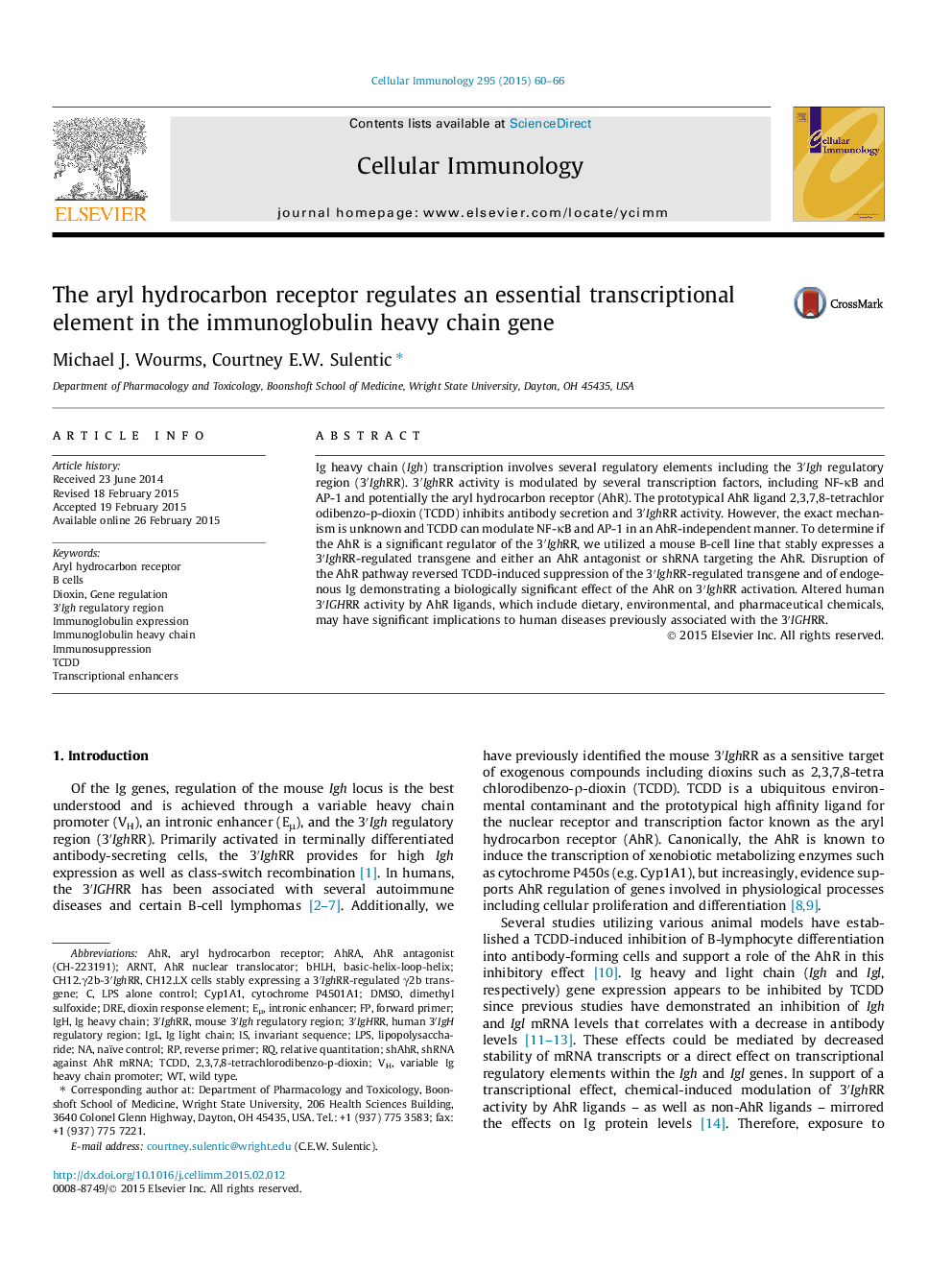| Article ID | Journal | Published Year | Pages | File Type |
|---|---|---|---|---|
| 2166948 | Cellular Immunology | 2015 | 7 Pages |
•The aryl hydrocarbon receptor (AhR) was inactivated or knocked down by shRNA.•A regulatory element within the Igh gene (3′IghRR) is a target of the AhR.•The AhR is a dominant, negative regulator of the 3′IghRR.•AhR activation inhibits 3′IghRR activity and Ig expression.•AhR disruption reversed inhibition of the 3′IghRR and Ig by an AhR ligand.
Ig heavy chain (Igh) transcription involves several regulatory elements including the 3′Igh regulatory region (3′IghRR). 3′IghRR activity is modulated by several transcription factors, including NF-κB and AP-1 and potentially the aryl hydrocarbon receptor (AhR). The prototypical AhR ligand 2,3,7,8-tetrachlorodibenzo-p-dioxin (TCDD) inhibits antibody secretion and 3′IghRR activity. However, the exact mechanism is unknown and TCDD can modulate NF-κB and AP-1 in an AhR-independent manner. To determine if the AhR is a significant regulator of the 3′IghRR, we utilized a mouse B-cell line that stably expresses a 3′IghRR-regulated transgene and either an AhR antagonist or shRNA targeting the AhR. Disruption of the AhR pathway reversed TCDD-induced suppression of the 3′IghRR-regulated transgene and of endogenous Ig demonstrating a biologically significant effect of the AhR on 3′IghRR activation. Altered human 3′IGHRR activity by AhR ligands, which include dietary, environmental, and pharmaceutical chemicals, may have significant implications to human diseases previously associated with the 3′IGHRR.
